41 query:cannot_group_without_agg
Я получил это сообщение (CANNOT_GROUP_WITHOUT_AGG ... Unable to parse query string for Function QUERY parameter 2: CANNOT_GROUP_WITHOUT_AGG. Я получил это сообщение об ошибке просто из простой формулы запроса, ... Grouping or summarizing rows - Power Query | Microsoft Learn You can find the Group by button in three places: On the Home tab, in the Transform group. On the Transform tab, in the Table group. On the shortcut menu when you right-click to select columns. Use an aggregate function to group by one or more columns
Pivot Column with Don't aggregate - Power BI So you can first use "Group By" to combine those values: select all columns except "Module Name", choose "Group By" with operation Maximum for column Module Name (this is just a dummy operation to have basis code generated) and adjust the code to have the module names combined. Now you can pivot.

Query:cannot_group_without_agg
Solution for "CANNOT_GROUP_WITHOUT_AGG" in Google Sheets Solution for "CANNOT_GROUP_WITHOUT_AGG" in Google Sheets Let me guess: you got this error when you where trying to pick some distinct value from a Google Sheets QUERY () The error means that you... How to Group and Aggregate Data Using SQL? - GeeksforGeeks The GROUP BY statement groups the identical rows present in the columns of a table. GROUP BY statement in conjunction with SQL aggregate functions (COUNT (), MAX (), MIN (), SUM (), AVG () etc.) help us to analyze the data efficiently. Now, let's understand this with an example. Before starting, we have to keep in mind a few important points-. SQL Tutorial: Selecting Ungrouped Columns Without Aggregate ... - Dataquest If we didn't want the names, we would run the query below. SELECT city, MAX (age) AS max_age FROM elite_agent GROUP BY city; Here is the output using the SQLite engine: Because we grouped by city, each row represents a city. We also included the maximum age for each group.
Query:cannot_group_without_agg. Why is an aggregate query significantly faster with a GROUP BY clause ... I'm just curious why an aggregate query runs so much faster with a GROUP BY clause than without one. For example, this query takes almost 10 seconds to run. SELECT MIN(CreatedDate) FROM MyTable WHERE SomeIndexedValue = 1 While this one takes less than a second. SELECT MIN(CreatedDate) FROM MyTable WHERE SomeIndexedValue = 1 GROUP BY CreatedDate Google Sheets Query: How to Use Group By - Statology Example 1: Group & Aggregate by One Column. We can use the following formula to select the Team and Points columns, then find the average of the Points column, grouped by Team: This tells us that: The average points scored by players on the Cavs is 10.8. The average points scored by players on the Celtics is 12.7. And so on. Example 2: Group ... スプレッドシート、QUERY関数の正しい書き方についての質問 Apr 19, 2020 ... 「関数queryのパラメータ2のクエリ文字列を解析できません:CANNOT_GROUP_WITHOUT_AGG」. 式の書き方に間違いがあるのかなと思うのですが、どの部分を ... 7 Common GROUP BY Errors | LearnSQL.com I'm using MySQL and when I run this statement, I get this: Result without GROUP BY 100 is the total count of all the recipes in the whole data set and the meal category 'Cold appetizer' is just one category out of ten. To correct this type of error, you need to add a GROUP BY meal_category at the end of the statement.
Group query results (LINQ in C#) | Microsoft Learn Group by single property example. The following example shows how to group source elements by using a single property of the element as the group key. In this case the key is a string, the student's last name. It is also possible to use a substring for the key; see the next example. The grouping operation uses the default equality comparer for ... Non aggregate columns and GROUP BY - bernardoamc To understand why this happens, first, we must know that after we group our games by release date our database will have a pool of rows (by date) and can't infer which row to choose from if we want some column other than the grouped one. So, in the case of the date 2015-05-01 it has to choose from the pool: Query parse error: CANNOT_GROUP_WITHOUT_AGG - anycodings means The query cannot use group columns anycodings_pivot without a AGGregate function. select A,C where A is not null group by A pivot B. Query parse error: CANNOT_GROUP_WITHOUT_AGG - Stack Overflow CANNOT_GROUP_WITHOUT_AGG means The query cannot use group columns without a AGG regate function. select A,C where A is not null group by A pivot B You're asking it to group by A. If the query groups by Column A, What to do with Column C? Column C cannot be displayed side by side.
How to Fix a 'Not a GROUP BY Expression' Error | LearnSQL.com How to Fix the "Not a GROUP BY Expression" Error Your approach to fixing this error will depend on what you want to achieve. Here are the options to consider. Option 1. Add the city column to GROUP BY. If you want the city to be displayed in the output, you'll need to group the data by both state and city. Can't run a query in a database - Office | Microsoft Learn Start Access. In the Database window, click Options on the Tools menu. In the Options dialog box, click to select the Output all fields check box on the Tables/Queries tab. Click Apply, and then click OK. In Access 2007, follow these steps: Start Access. Click Microsoft Office Button, and then click Access Options. Click Object Designers. GROUP BY clause in Azure Cosmos DB | Microsoft Learn The GROUP BY clause must be after the SELECT, FROM, and WHERE clause and before the OFFSET LIMIT clause. You cannot use GROUP BY with an ORDER BY clause. The GROUP BY clause does not allow any of the following: Aliasing properties or aliasing system functions (aliasing is still allowed within the SELECT clause) Subqueries. Why am I getting group by aggregate errors in this query You cannot use formula field to GROUP BY .In past I have done workflows to replace formula fields to use in Aggregate SOQL. - Mohith Shrivastava Mar 20, 2016 at 14:21
Cannot create aggregate without a GROUP BY #430 - GitHub Both the workaround and a possible OOTB functionality suffer from the same inefficiency described in point 2. The difference between the workaround and OOTB would be that, well, OOTB has a much better UX. But there's no technical hurdle to provide this OOTB (just to mention this clearly). Short-term: We provide a more descriptive and actionable ...
NULL Values and the GROUP BY Clause | LearnSQL.com The GROUP BY Clause and NULL Values. Let's start by executing a simple SQL query with both the GROUP BY clause and NULL values: SELECT department FROM employee GROUP BY department; RESULTS department 1. 2. IT 3. FINANCES Note: I've added a numbered list here for clarity; usually the results would be shown as an unnumbered list.
aggregate - Use of HAVING without GROUP BY in SQL queries - Database ... No. They don't have to coexist, as proved by the fact that the following query in Oracle works: select * from dual having 1 = 1; Similarly, in PostgreSQL the following query works: select 1 having 1 = 1; So having doesn't require group by. Having is applied after the aggregation phase and must be used if you want to filter aggregate results.
I got this message (CANNOT_GROUP_WITHOUT_AGG) from a simple query 1 Answer. If you don't have an agreggation function (such as sum, avg, count in SELECT ), there is no use for GROUP BY - you may just delete it. If you wish to present unique records, use distinct instead. I already add a count function =QUERY (ANSWER!A:C, "SELECT A, B, C, COUNT (C) GROUP BY C", 0) but why it's still give an error?
SQL GROUP BY to Summarize and Rollup Query Results The GROUP BY statement must be after the WHERE clause. (If one exists.) The GROUP BY statement must be before the ORDER BY clause. (If one exists.) To filter the GROUP BY results, you must use the HAVING clause after the GROUP BY. The GROUP BY statement is often used in conjunction with an aggregate function such as COUNT, MIN, MAX, AVG, or SUM.
How to return DISTINCT/UNIQUE list of text via Google QUERY? Adding another QUERY formula will help to remove the helper column: =QUERY ( QUERY ( {A1:B6, A1:A6}, "SELECT Col1, COUNT (Col3) WHERE Col2 = 'SubCatA' GROUP BY Col1" ), "SELECT Col1" ) Use the Unique (range) function. This will work on one column retrieval. You can use this technique for further exploring your task.
How to Use the 'Group by' SQL Clause in Google Sheets Google Sheets Group By. Group by is a powerful clause in the QUERY function that actually lets you further summarize large amounts of data in Google Sheets. It uses the format =QUERY(range,"SQL query'"). In this tutorial, we will explore how to get the aggregate values (click here for a review of aggregate functions that can be used in queries) and calculate them by group through the SQL-like ...
I got this message (CANNOT_GROUP_WITHOUT_AGG) from a ... How do I fix this error message? Unable to parse query string for Function QUERY parameter 2: CANNOT_GROUP_WITHOUT_AGG. I only got an error from a simple query ...
STRING_AGG (Transact-SQL) - SQL Server | Microsoft Learn The following query achieves this result: SQL Copy SELECT a.articleId, title, STRING_AGG (tag, ',') as tags FROM dbo.Article AS a LEFT JOIN dbo.ArticleTag AS t ON a.ArticleId = t.ArticleId GROUP BY a.articleId, title; GO Here is the result set. Note The GROUP BY clause is required if the STRING_AGG function isn't the only item in the SELECT list.
How will GROUP BY clause perform without an aggregate function? Learn MySQL from scratch for Data Science and Analytics. When we use GROUP BY clause in the SELECT statement without using aggregate functions then it would behave like DISTINCT clause. For example, we have the following table −. By using the DISTINCT clause on column 'Address', MySQL returns the following result set.
I got this message (CANNOT_GROUP_WITHOUT_AGG) from a ... Jul 15, 2022 ... google sheets – I got this message (CANNOT_GROUP_WITHOUT_AGG) from a simple query ... If you dont have an agreggation function (such as sum , avg ...
I am stuck in Query Function - Google Docs Editors Community Apr 5, 2019 ... It's shown below error. Unable to parse query string for Function QUERY parameter 2: ADD_COL_TO_GROUP_BY_OR_AGG: D. In A1 & B1 there ...
Query cannot group without Aggregate : r/googlesheets - reddit to get them "group by F' you'd want to combine data for that group, in this example it would to be sum the sales figures for each name. =query (A:F,"select F,sum (A) group by F order by sum (A) desc",0) In my case A is text (companies that the agents have sold to (there can be duplicates)), F are the name of the agents (there are duplicates ...
12.19.3 MySQL Handling of GROUP BY - Oracle In standard SQL, a query that includes a GROUP BY clause cannot refer to nonaggregated columns in the select list that are not named in the GROUP BY clause. For example, this query is illegal in standard SQL because the nonaggregated name column in the select list does not appear in the GROUP BY: . SELECT o.custid, c.name, MAX(o.payment) FROM orders AS o, customers AS c WHERE o.custid = c ...
SQL Tutorial: Selecting Ungrouped Columns Without Aggregate ... - Dataquest If we didn't want the names, we would run the query below. SELECT city, MAX (age) AS max_age FROM elite_agent GROUP BY city; Here is the output using the SQLite engine: Because we grouped by city, each row represents a city. We also included the maximum age for each group.
How to Group and Aggregate Data Using SQL? - GeeksforGeeks The GROUP BY statement groups the identical rows present in the columns of a table. GROUP BY statement in conjunction with SQL aggregate functions (COUNT (), MAX (), MIN (), SUM (), AVG () etc.) help us to analyze the data efficiently. Now, let's understand this with an example. Before starting, we have to keep in mind a few important points-.
Solution for "CANNOT_GROUP_WITHOUT_AGG" in Google Sheets Solution for "CANNOT_GROUP_WITHOUT_AGG" in Google Sheets Let me guess: you got this error when you where trying to pick some distinct value from a Google Sheets QUERY () The error means that you...


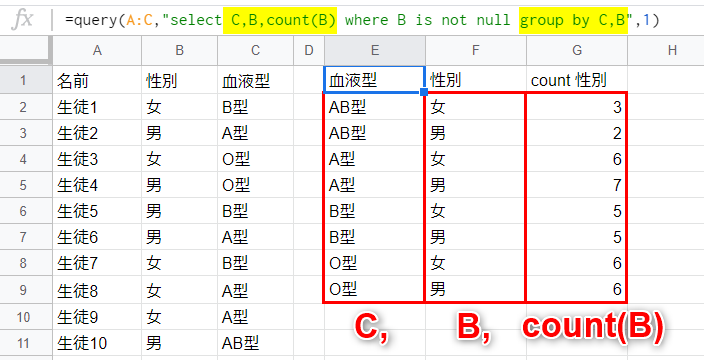

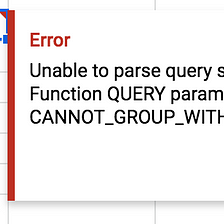


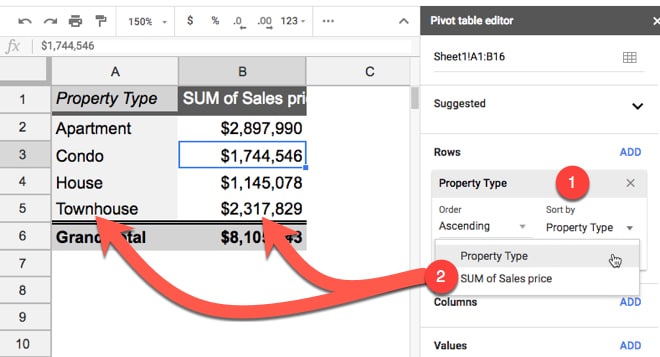
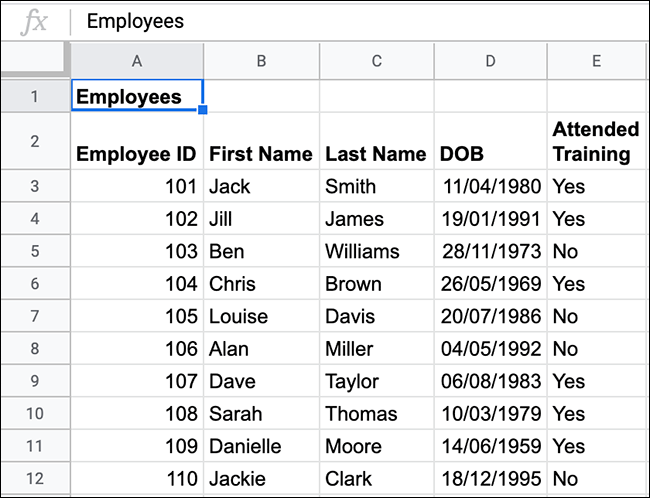
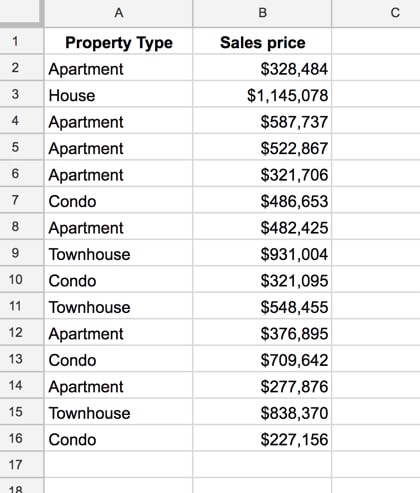




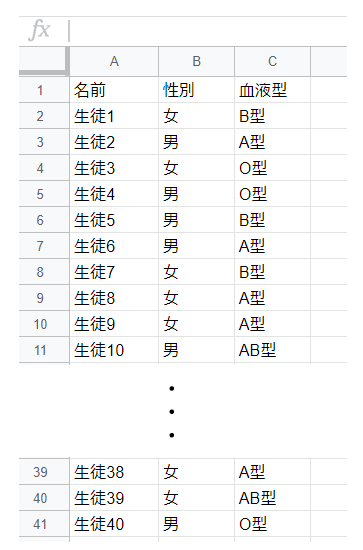
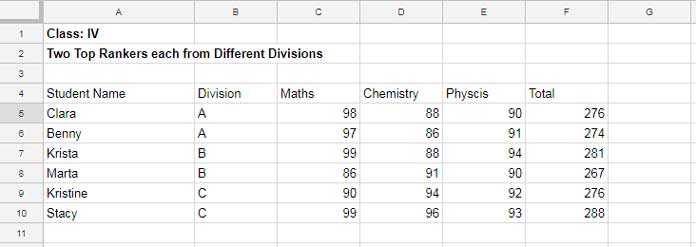



![Video] Cách kết hợp hàm QUERY và hàm IMPORTRANGE trong Google ...](https://cdn.tgdd.vn/hoi-dap/1350779/QUERY-IMPORTRANGE-BANG-800x424.jpg)




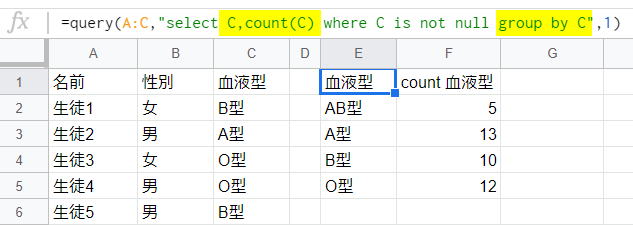





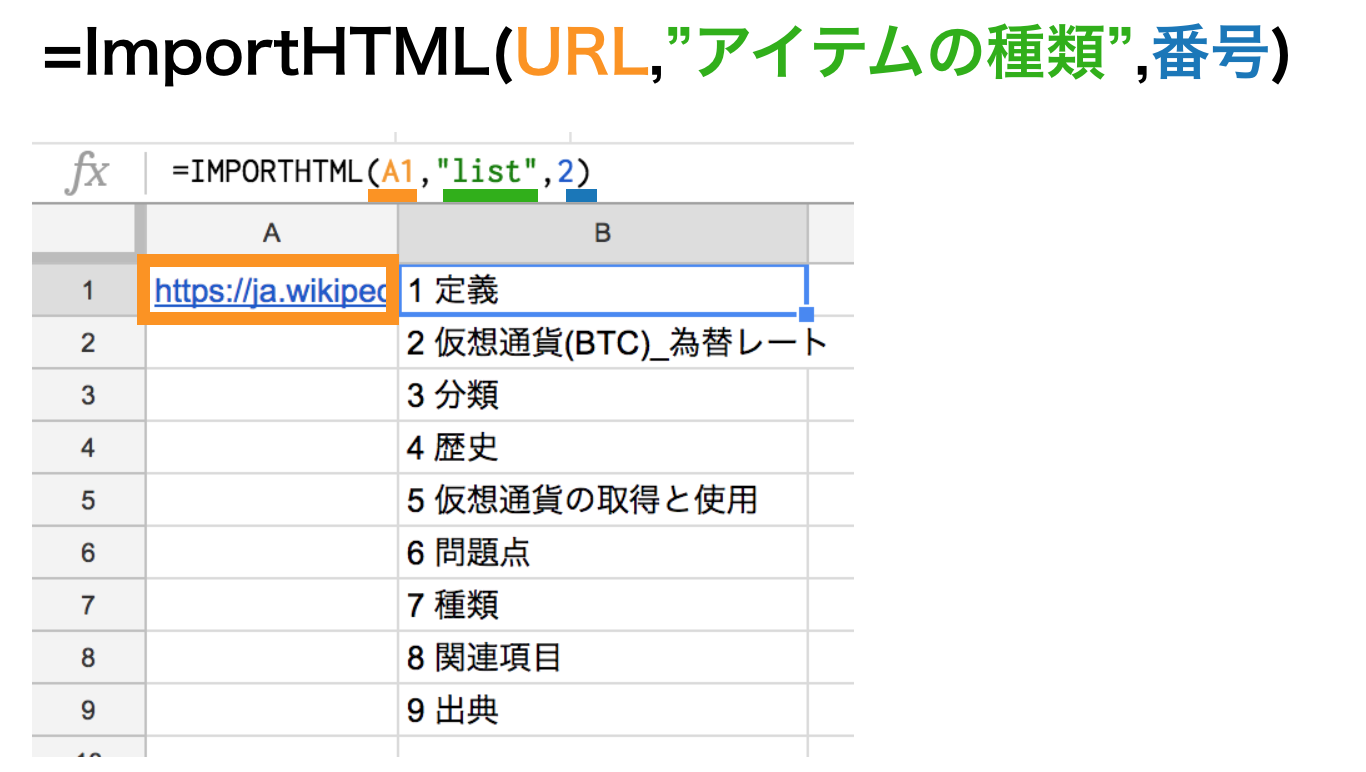
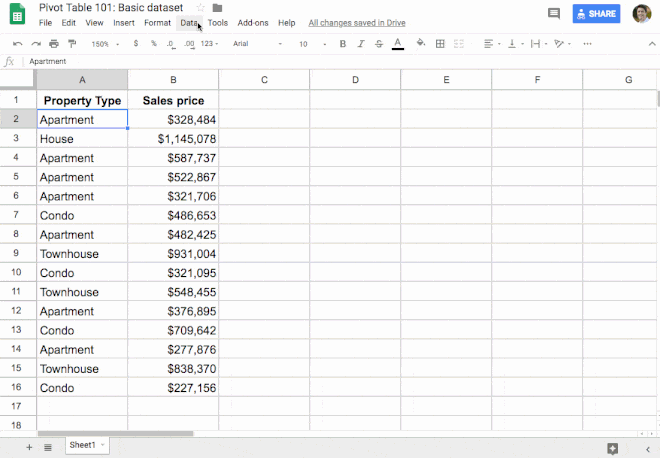

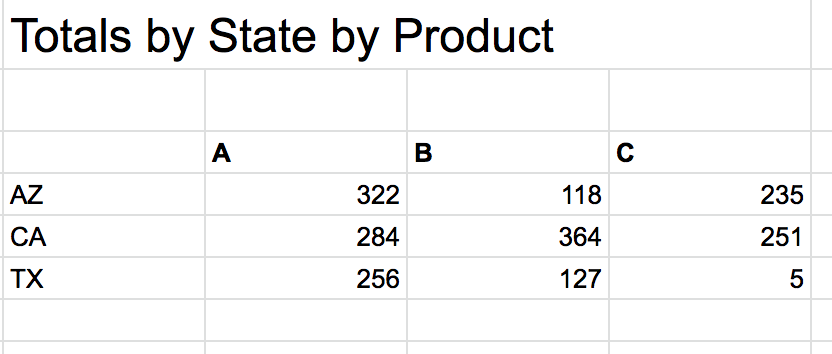
Post a Comment for "41 query:cannot_group_without_agg"